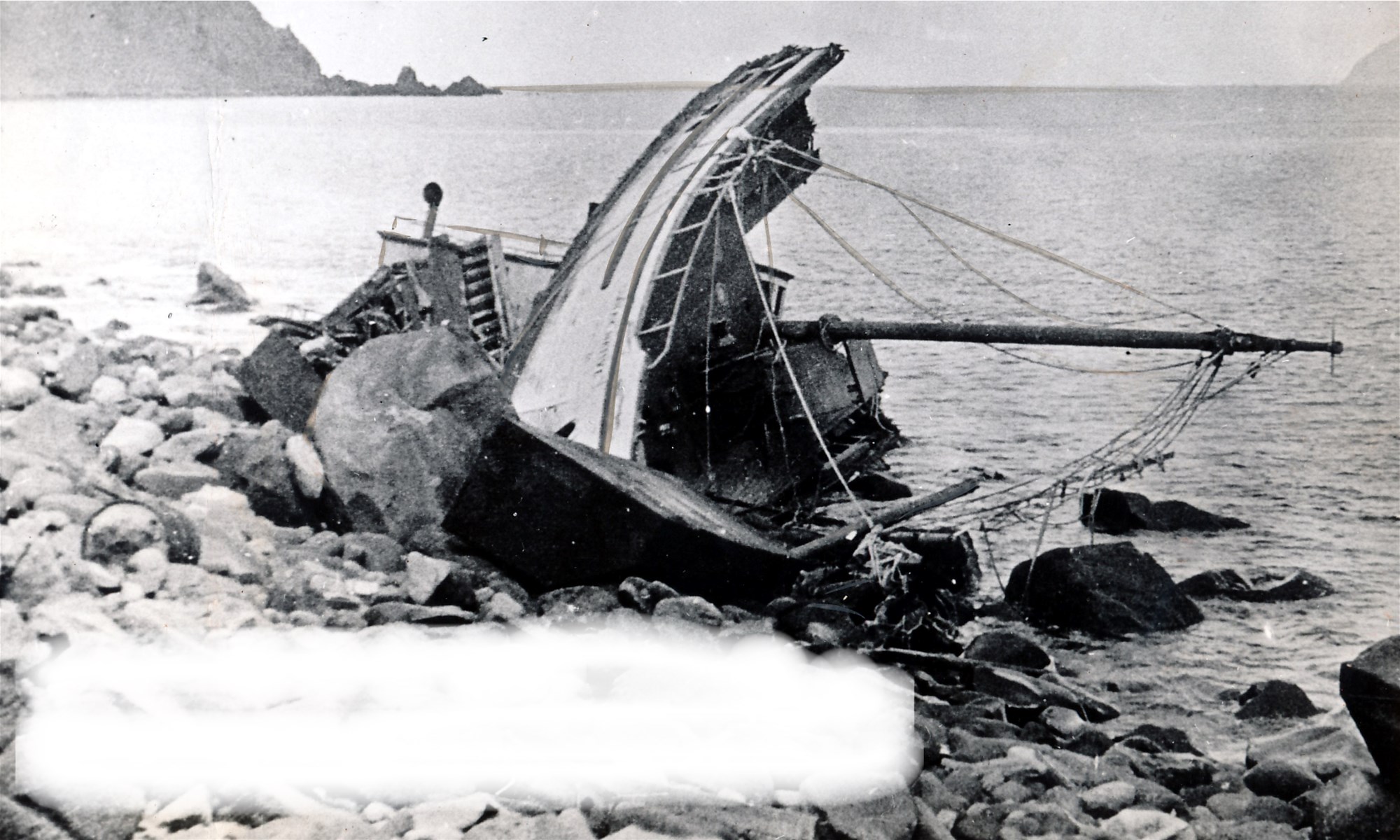We are in the middle of the 29th week of the year, which by my reckoning covers July 16th to July 22nd. I have decided to post a weekly accounting of the significant maritime events of each week in Alaska history that I have run across in my research. The three that stand out for the 29th week of the year are as follows:
July 18, 1935 The wood hulled gas screw Bessie M caught fire Tuesday at 1:30 p.m. while at the float dock at Excursion Inlet. No one was on board at the time. The vessel was towed away from the dock and a hole was chopped in her side subsequently sinking the Bessie M and “checking the flames”. Because of the sinking, her engine and the lower part of the hull were saved. The cause of the blaze has been attributed to “gas fumes”. I am including this small event because there is a lesson that many mariners should pay attention to. Literally hundreds of vessels have burned and become total losses in the Alaska marine environment without the simple action that was taken to stop the flames and save this boat. The Bessie M was put it in “Wet Storage” until she could be re-floated and the damage repaired. This method is seldom thought of in the heat of the moment. Another example I have in my files is of a vessel owner who puts out an engine room fire by blasting holes in the hull below the waterline with his shotgun.
July 19, 1903 the Kenai salmon cannery owned by Pacific Packing and Navigation Company was destroyed by fire. Once owned by Pacific Steam Whaling Company, the cannery could produce 60,000 cases of salmon a season. There was enough insurance to cover the loss.
July 20, 1784 an unknown Japanese junk out of Shiroko wrecked on Amchitka after drifting more than 7 months. The following is an excerpt from a letter written February 26, 1791 to Count Aleksandr R Vorontsov by Kyrill Laksman detailing the plight of Japanese castaways rescued in the Aleutians by Russian Promyshlenniks:
“On December 13, 1783, seventeen Japanese men sailed out from the town of Shiroko to trade in the capitol city of Yedo. At the halfway point of their voyage they, like many similar vessels, stopped to spend the night in Semioda Bay. During a violent windstorm another vessel hit them and broke off their rudder. Without the rudder they had to cut the mast, and thus they drifted at the mercy of the waves for more than seven months, drifting in various directions. At last on July 20, 1784 they came to the Aleutian Island of Amisachka where they dropped anchor and went ashore in a small boat. They found seven Aleut men there who were hunting wild geese. The Aleuts invited the five Japanese into their earthen iurts and gave them cooked goose and fish to eat. Toward evening Russian promyshlenniks came to the island from a vessel which had been wrecked on the island, a vessel which belonged to the Totma merchant, Khodilov. The Russians went to the Japanese vessel and spent the night in a cabin on shore, but during the night there was a storm at sea and the anchor broke away on some sharp rocks underwater. The ship was cast adrift and then was wrecked on the coast. Thus, deprived of their last hope, the men had to remain on that island for three years and a month, during which time the Russian promyshlenniks used planks from their wrecked vessel, and the remains of the Japanese vessel, which had been built of redwood and camphor, to build a new vessel. In September of 1787 they took the remaining nine Japanese men with them to Nizhnekamchatsk ostrog. Seven of the Japanese had died while they were on the Aleutian Island, and an eighth was killed during a storm at sea”
